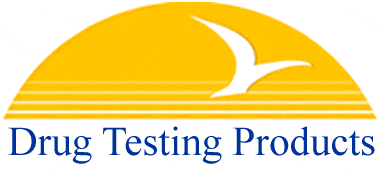
|
Home
|
View Cart |
Shipping | Privacy |
Drug Testing Help |
|
|
|
|
||||
 |
|
|
drug test * drug testing * employee drug testing * urine test * marijuana drug test * urine drug test * hair drug test * drug test * drug test kit * saliva drug test * panel drug testing | ||
|
|
|
||||||
Drug Testing And Corporate MoraleWhen people think about drug testing programs, they are likely to focus on a single facet of those programs. That facet is usually the collection of urine from an employee and the analysis of that urine for the presence of illegal drugs. But an actual drug test itself is only one segment of a more comprehensive approach to the control of drug use in the workplace. The National Institute on Drug Abuse of the U.S. Department of Health and Human Services has identified five major features of a comprehensive drug testing program: a policy statement, supervisor training, employee education, an employee assistance program (EAP), and provisions for identifying illegal drug users. A policy statement should explain what the purpose of the drug-testing program is, what employees should expect from the program, and what happens if and when an employee violates the company's policies. The next stage of the program, supervisor training, is intended to help supervisors recognize behaviors that may suggest illegal drug use on the part of an employee. Supervisors are also shown how to refer those employees for additional counseling and assistance. Employee education is an important feature of the drug testing program because it is designed ultimately to eliminate the need for drug testing. That is, its goal is to teach employees the risks and dangers of using illegal drugs. Employee education may involve the distribution of materials and information about the specific ways in which drug abuse can harm an individual, hinder that individual's work performance, and damage the company for which he or she works. The educational program may also include special presentations or sessions. Employee assistance programs are often an important component of a drug testing program. One goal of identifying drug abusers on the job (either by supervisory observations or by drug testing) is, of course, to remove unacceptable employees. Another goal, however, is to help employees deal with their drug problems. EAPs usually include not only the supervisory training programs described but also efforts to encourage drug abusing employees to seek help in a drug abuse rehabilitation program. Drug testing continues to be a crucial part of many drug abuse programs. Tests may be conducted under anyone of five circumstances. First, all applicants for a job may be asked to take a drug test. The purpose of such testing is to screen out applicants who have recently used an illegal drug. Drug testing proponents point out that pre-employment testing also lets applicants know that a company is serious about having a drug-free workplace. Thus, many drug users may never bother to apply to such companies. Drug tests may be required of all employees involved in any kind of workplace accident. For example, if a train runs off its track, resulting in the loss of lives, all members of the train crew as well as any employee involved in directing the train's movement can be asked to take a drug test. Drug tests may be given when there is reasonable suspicion that an employee may have been using illegal drugs. An employee who is chronically late for work and makes many mistakes on the job is a likely candidate for a drug test, especially if this behavior is new or otherwise unexplained for the employee. Drug tests may be given on a random basis to some or all employees of a company. For example, the person in charge of testing may simply draw ten names at random each Monday and ask those employees to take a drug test. Or every person in the company may be tested once a year, with the date for each individual's test scheduled at random. Random testing is most commonly used in safety sensitive jobs. Finally, employees who have previously tested positive for illegal drugs and have been referred to counseling or treatment programs may be asked to participate in either regularly scheduled or random follow-up drug tests. Who Should Consider Drug testing in The Workplace Drug Testing and Corporate Morale Drug Testing and Increase in Productivity Drug Testing and Reduction of Accidents Drug Testing Government Policies
| |||||||